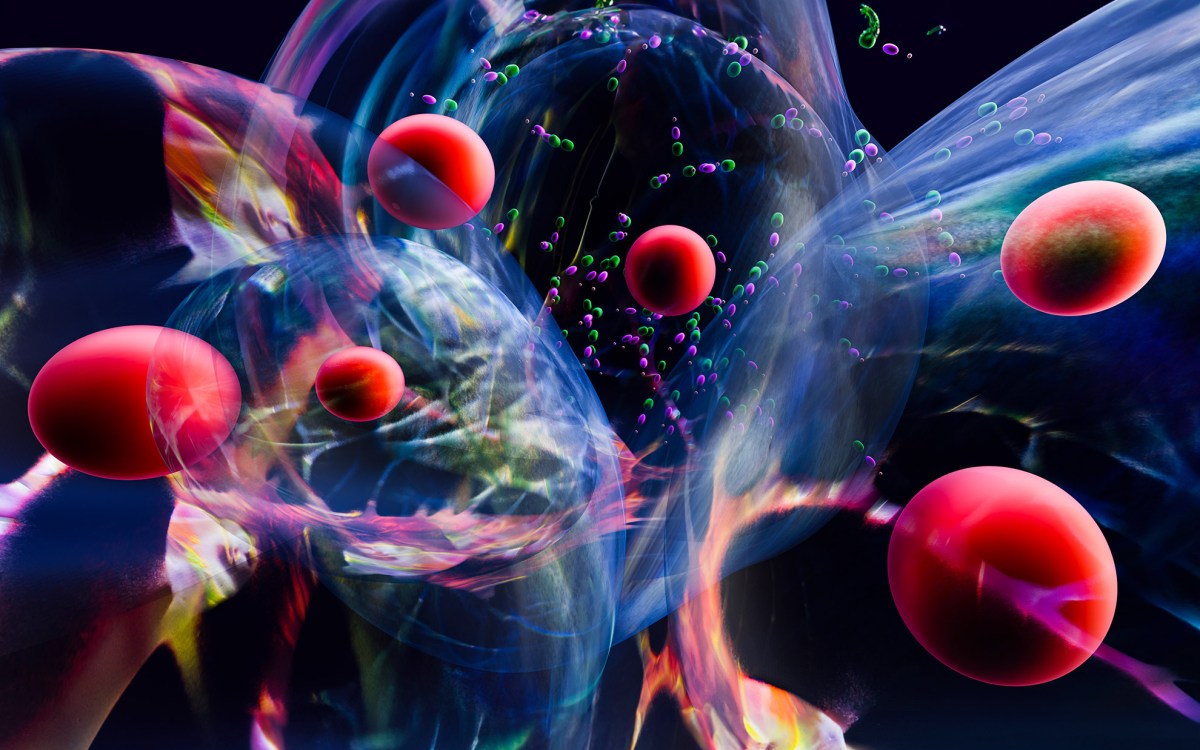Life on a Saturn moon? Harvard-NASA study finds key ingredient for biological building blocks

NASA/JPL-Caltech/Space Science Institute
A diminutive, snow-covered moon of Saturn called Enceladus has taken first place among candidates for hosting life in our solar system, according to a joint Harvard-NASA study. Led by Griffin Graduate School of Arts and Sciences student Jonah Peter, the Nature Astronomy study reports strong confirmation of hydrogen cyanide, a poisonous gas that’s also a molecule central to the origin of life, within the plume of water vapor shooting from the moon’s surface.
“Our results demonstrate that Enceladus is host to some of the most important molecules for both creating the building blocks of life, and for sustaining that life through metabolic reactions,” said Peter, a biophysics graduate student who performed much of the research while working at NASA’s Jet Propulsion Laboratory with co-authors Tom Nordheim and Kevin Hand.
Thanks to data from NASA’s Cassini-Huygens mission, scientists have long known that the moon’s giant plume of ice grains is rich with organic compounds. The discovery of hydrogen cyanide takes the evidence for possible habitability a step further.
Life requires building blocks such as amino acids, and hydrogen cyanide is one of the most important and versatile molecules needed to form these compounds, according to Peter. Because its molecules can be stacked together in many different ways, the study authors refer to hydrogen cyanide as the “Swiss army knife” of amino acid precursors.
The researchers also uncovered evidence that Enceladus’s ocean, which is hiding below the moon’s icy outer shell and supplies the plume, holds a powerful source of chemical energy. Unidentified until now, the energy source is in the form of several organic compounds, some of which, on Earth, serve as fuel for organisms.
“Not only does Enceladus seem to meet the basic requirements for habitability, we now have an idea about how complex biomolecules could form there, and what sort of chemical pathways might be involved,” Peter said.
In 2017, scientists found evidence of chemistry on Enceladus that could help sustain life, if present, in its ocean. The combination of carbon dioxide, methane, and hydrogen in the plumes was suggestive of methanogenesis, a microbial metabolism named for the fact that microbes produce methane as a byproduct. Methanogenesis is widespread on Earth and may have been critical to the origin of life on our planet.
Peter’s recent work uncovers evidence for additional energy sources far more powerful and diverse than the making of methane: The authors found an array of organic compounds that were oxidized, indicating to scientists that there are many chemical pathways to potentially sustain life in Enceladus’s subsurface ocean. That’s because oxidation helps drive the release of chemical energy.
Scientists are still a long way from proving that life could originate on Enceladus. But, as Peter noted, the new work lays out chemical pathways for life that could be tested in the lab.
The research was supported by NASA.





